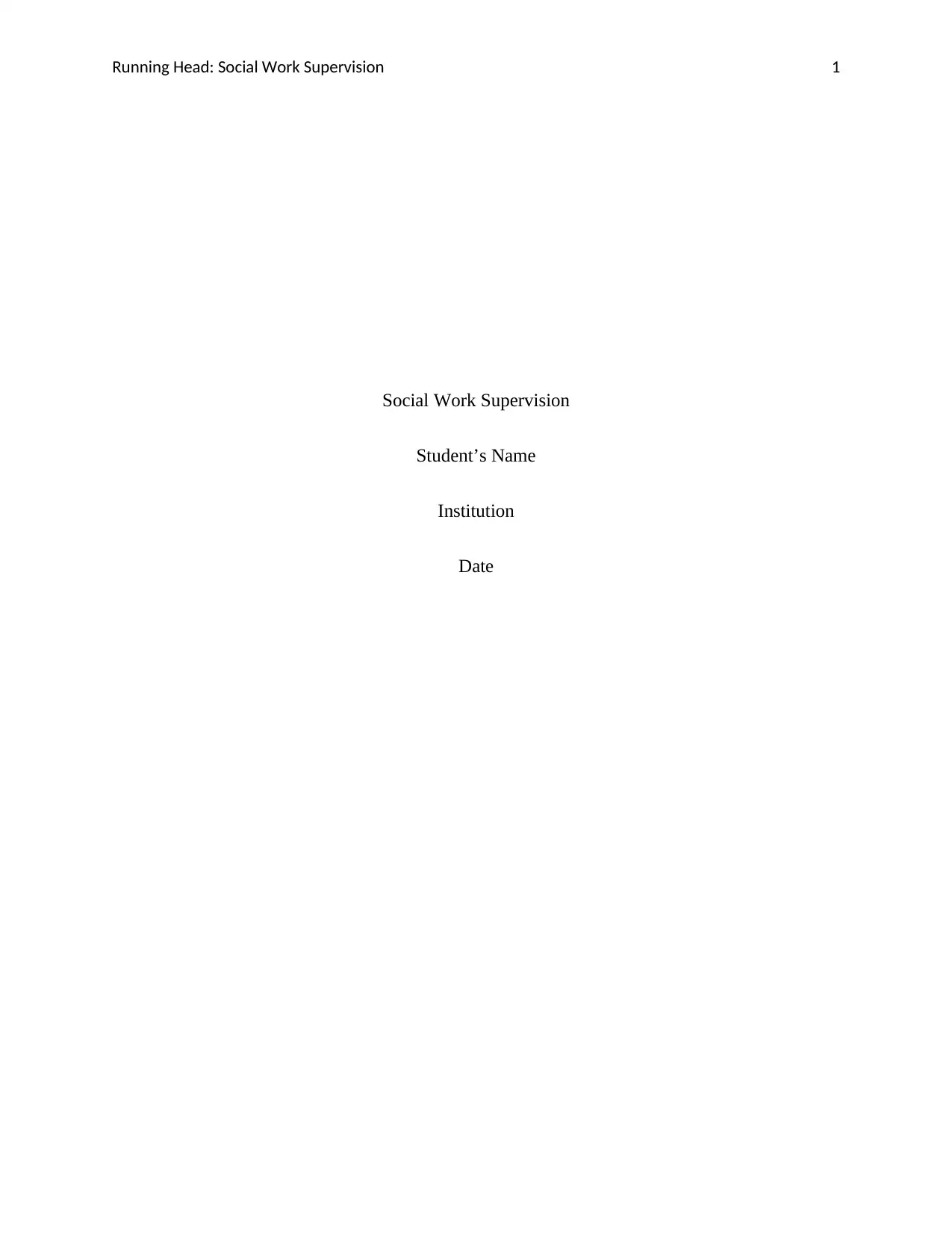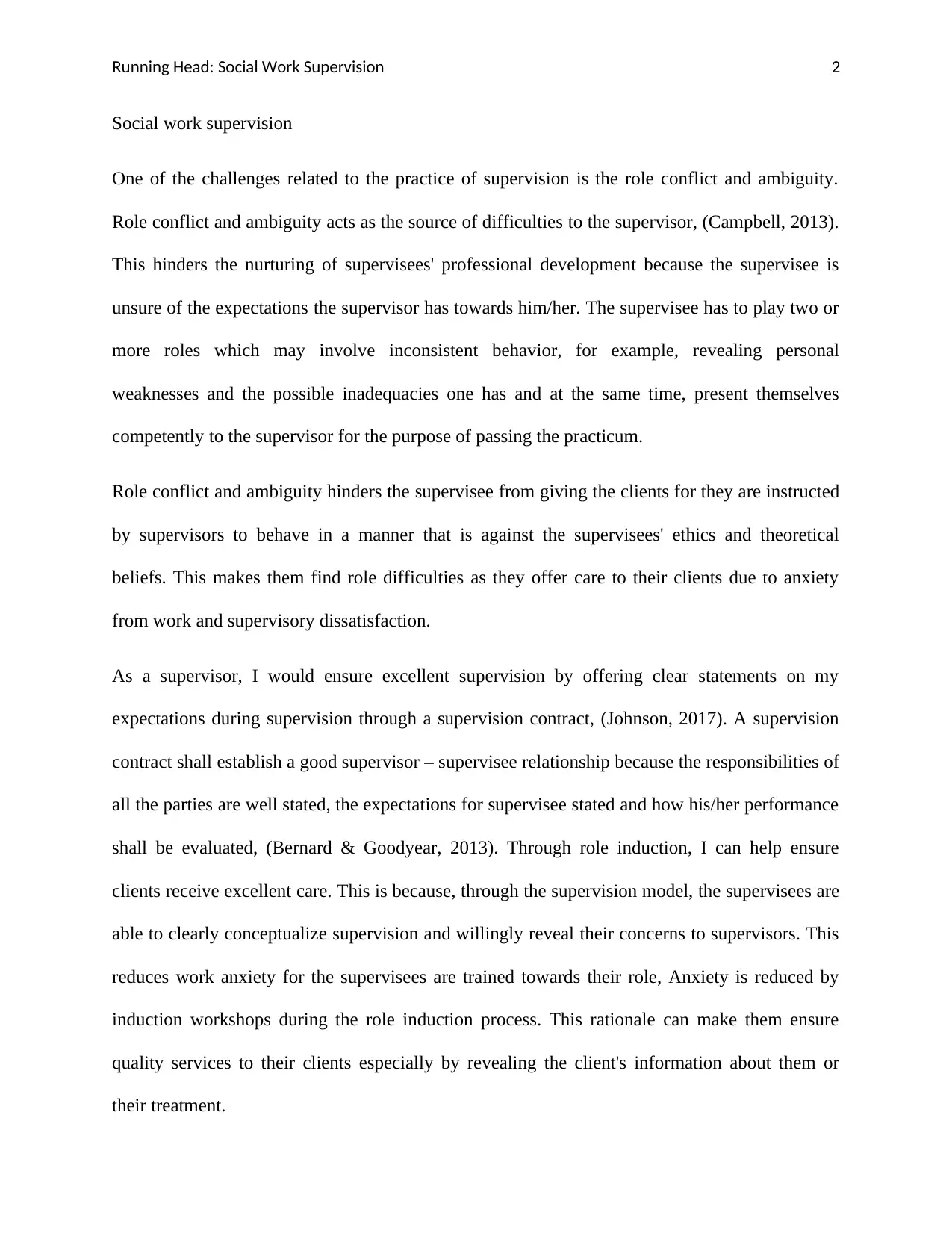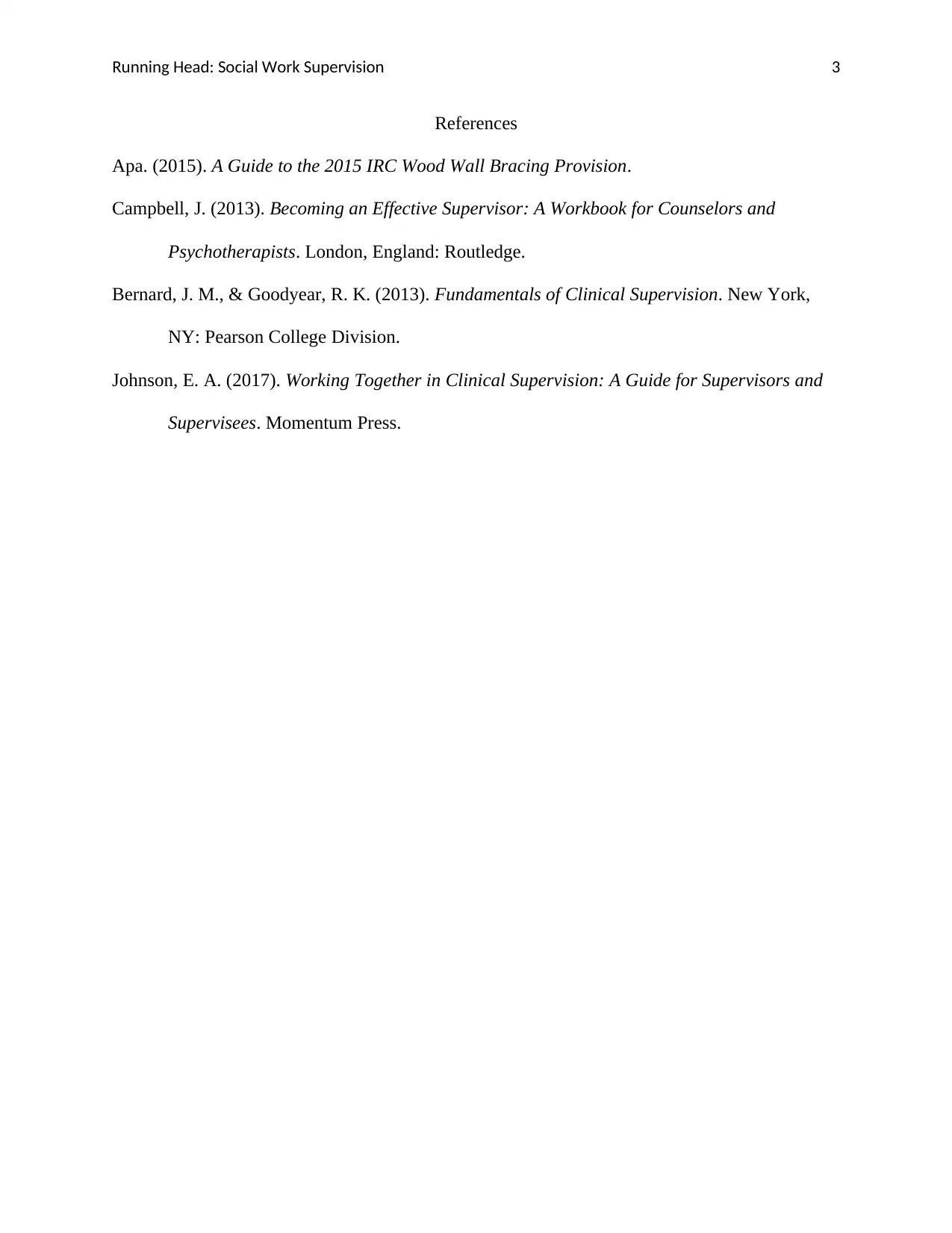Social Work Supervision Report: Role Conflict and Ambiguity Analysis
VerifiedAdded on 2022/09/07
|3
|437
|15
Report
AI Summary
This report delves into the challenges of role conflict and ambiguity within social work supervision. It highlights how these issues can hinder supervisee development and impact client care. The report discusses the importance of clear expectations, as well as the creation of a supervision contract to foster a strong supervisor-supervisee relationship. The author suggests that a well-defined supervision model, including role induction, can reduce work anxiety and improve the quality of services provided to clients. References from APA, Campbell, Bernard & Goodyear, and Johnson are included to support the analysis and provide further reading on the topic.
1 out of 3




![[object Object]](/_next/static/media/star-bottom.7253800d.svg)